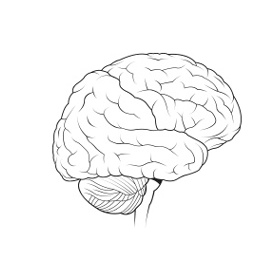Adam Kallish
Designer and Founder of Trope Collaborative
Primary design concentration:
Interdisciplinary Design
Most preferred tool for designing:
My mind
1. How and why did you choose to become a designer?
I am an accidental designer, and have never had a “traditional” path as one. I came from the sciences into design, was trained as a graphic designer, merged it with liberal arts thinking, and then had a radical idea that design was about creating frameworks and processes that led to better products. My mind considers itself a designer and views everything through the design lens. This is a humanistic approach to improving anything that I become involved with that creates better outcomes. Most designers think I do something else, and others think I am a designer.
2. Challenges you encounter as a designer and how do you deal with them?
a) Most important, that design is an activity that can, and should be involved early in problem identification to possibly reframe the problem to create either incremental or new value. I usually facilitate discussions and have to understand initial constraints to determine how willing clients are to redefining problem scope.
b) Most companies say they want design, but their actions work against this statement. I therefore have to understand internal cultural patterns that work against change. Design is becoming accepted as something that is part of many industries, and that it can create better experiences and market loyalty.
c) There is a lack of understanding by both clients and designers about the value and role of research. Due to the synthetic nature of design, it has borrowed many research techniques from several different fields and the integration of these into understandable frameworks and methods are still nascent. I tend to use a critical thinking cycle for research: observe, ask questions, gather relevant information, sort information, connect to create new insights.
d) Just like designers have stereotypes of other fields, other disciplines view design as purely a “creative” endeavor that is exclusively “expressive.” Finding common ground and a shared vocabulary is important to create room for real collaboration.
e) Controlling the metacognition of design, which can lead to semantic wormholes, and confusion. In making connections between design and situations, I tend to seek the desired end and work myself backwards to the connection. This is where I secure my best insights and create greater value.
f) Most designers state that they are strategists, but do not have the strategic skills and are afraid of ambiguity. When collaborating with design firms, I tend to ease into strategy and planning issues in order to make sure that they don't jump to making things out of frustration.
3. Your definition of an “elegant solution,” that is, good design?
Good design fulfills the articulated needs of users, but really addresses their unarticulated needs and desires. It merges precedent, new meanings and contexts to reinvigorate an existing artifact, or to create something so modified that it is considered a new archetype. It focuses all the senses and because of their alignment, causes curiosity, joy and then ownership. It causes people be their personal best, and reinforces what makes them human. The solution transcends further changes and keeps certain aspects of the original value, even if it is not fully maximized.
4. From skills to values, what makes a designer successful?
Skills come from values, and values come from instilled beliefs. Because design is a synthetic activity and has so much diversity, there are many types of designers, and many paths to become one. The best designers have excellent facilitation, interpersonal, critical thinking, imaginative, creative, organizational, collaborative, business, empathetic, and sense of humor skills. Being serious and playful at the same time is very important and having an ability to take a “leap-of-faith” is important to make new connections.
5. How do you stay motivated and grow personally and professionally as a designer?
Be curious and paranoid at the same time. I seek excellence in all its forms and demand it of myself and others. Since I do not view design through a traditional “(artifact) design” lens, I have been more flexible to find inspiration and value all around me. We are living in an age of fantastic new innovations and ideas in a number of fields that can be incorporated into design.
6. For those aspiring to become a designer, whatever the discipline,what is your advice?
First, devote yourself to a particular design discipline and be an excellent practitioner through its values, craft, and outcomes. Grow your curiosity horizontally to other fields that impact your design discipline and learn how to extend one's curiosity to these connections. Never say never, and never say “that's not design” because you don't want others to say “this is not a situation that needs design.”
7. What is your quest in design?
I have been dedicated to being an interloper, or an ambassador without papers. This has allowed me to expand the practice of design into fields and industries that never would have considered the role of design. Focusing on design methods, interdisciplinary (within design disciplines) and multidisciplinary (merging design with other disciplines) approaches continues to reinvigorate my views about what design can offer, and what the limits to design are. I believe that the future of design will be in integrating research methods, business models, sustainability, technology integration, rapid prototyping, facilitation, project management, and production/distribution activities.
Next: Michelle Joy Gadrinab

Support this solo initiative
What began as a collection of links has evolved into a comprehensive archive committed to creative culture—offering so far 395 interviews with under-the-radar Artists, Designers & Makers, in addition to 202 write-ups across events, books, movies, more. Free to explore. Free from ads. If you gain a level of motivation, knowledge, even delight, from Design Feast, please support on Patreon. Thanks for your consideration!
Wishing you continual success,
Nate Burgos, Content Creator & Publisher
Comments
There are no comments yet.
Leave Your Comment